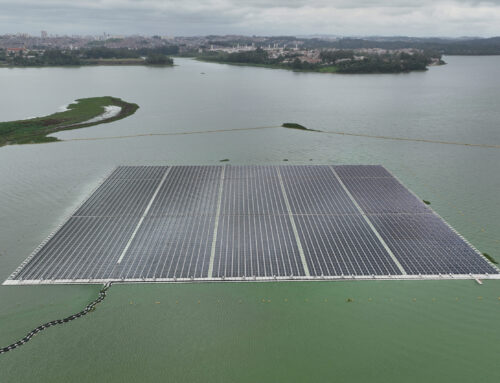The Price You’ll Pay When Renewables Go Missing: Electricity Market Volatility
November 28, 2025
When it comes to renewable-heavy electricity markets, such as those in Europe and certain parts of the U.S., two seasons matter most: summer and winter. These opposite seasons pose similar challenges, which are a growing mismatch between when renewable electricity is generated and when it is needed. In summer, sunny regions like California and southern Europe often generate more power than they can use, pushing prices below zero. In winter, the situation flips, leaving the grid short of clean electricity, just as demand rises. This mismatch is one of the biggest drivers of electricity market volatility.
Within this broader pattern, there is one extreme situation known by the German name “Dunkelflaute”, or “dark doldrums.” It describes the long, gloomy stretches (48 hours or more) when wind and solar generation fall below 15% of installed capacity.
Although rare, these renewable shortfalls can have a dramatic effect on electricity prices. In December 2024, a drop in German renewable output sent day-ahead prices spiking to €936/MWh at 5 pm – more than ten times the seasonal average – while several other European countries saw daily average prices above €300/MWh. In the U.S., markets like ERCOT in Texas have seen sharp price spikes during winter emergencies.
These examples illustrate a key point: when renewable output falls or system conditions shift, markets quickly rely on higher-cost resources, and prices can swing sharply.
Supply Shocks, Price Spikes, And The Mechanics Of Market Response
One reason for this strong price volatility is the structure of electricity markets themselves.
Prices in the United States and Europe are not set by the average cost of electricity. Instead, they are set by the marginal unit needed to meet demand. In practice this means that typically the last (and most expensive) generator dispatched determines the price.
This “merit-order” structure means that as long as renewables are available, prices tend to stay low. But when renewable output drops, the system turns to higher-cost fossil power plants to bridge the gap, and prices climb rapidly.
For utilities with generators and energy traders, this volatility presents both challenges and opportunities. In the past, fossil reserves were the default stabilizer of last resort. But in a future-oriented, resilient energy system, the solution must increasingly lie in flexibility on both the generation and demand sides.
Resilience Starts With Flexibility
One of the most important technologies for delivering this flexibility is battery energy storage systems (BESS). They can store cheap energy when it’s abundant and release it back into the grid when supply is low. However, today’s batteries, typically with one to two hours of storage duration, are still geared toward short-term grid balancing.
Therefore, closing that gap requires a broader mix of solutions. A diverse renewable portfolio, combining wind, solar, hydro, and geothermal, can naturally smooth out weather-driven volatility. Demand-side flexibility, along with digital grid management and optimization tools, add further resilience. Together, these solutions lay the foundation for a more stable and efficient energy system and create new revenue opportunities for flexible assets in a volatile market.
Where Market Design Still Lags Behind
Yet in many markets, these flexibility options only play a minor role, because regulatory structures were built for a fossil-centered grid. To address this, balancing markets need to allow sub-hourly flexibility, smaller flexibility resources and capacity markets should reward emerging long-duration storage.
Local flexibility markets should also be part of this evolution. Activating decentralized resources such as residential batteries, rooftop solar, and commercial demand response close to the point of congestion can reduce strain on distribution networks and avoid the need for costly grid reinforcements. When designed well, they turn consumers into contributors to system resilience.
A System Beginning To Adapt
While much remains to be done, signs of progress are emerging. Many power markets are moving from hourly to 15-minute trading intervals – a long-overdue reform that reflects the variability of renewable generation. By aligning trading intervals with the imbalance settlement period, the new structure sharpens price signals, strengthens forecasting, and makes it easier for fast-responding assets such as batteries and demand-response resources to participate. Another important step in the Nordic countries has been end customer contracts with price transparency. This is an easy way to harvest the flexibility of already installed heat pumps and EV charging.
In fact, what often goes unnoticed in discussions around resilience is the role of energy trading itself. Modern storage and demand assets no longer operate in a single market. They move across several – day-ahead, intraday, balancing – reallocating capacity as system conditions shift. A single battery might participate in up to five different markets within the same day, switching between wholesale arbitrage and reserve provision, reacting minute by minute to price signals, imbalances, and changing forecasts.
This kind of cross-market optimization, driven by algorithms that adapt to forecast updates, failed bids, or unexpected grid conditions transforms flexibility into a real-time service. It’s not just about buying low and selling high. It’s about responding to scarcity and volatility with precision, and aligning dispatch with actual system needs.
In that sense, trading becomes the operational layer of flexibility. It’s how a decentralized, data-driven, dynamically optimized system makes decisions. Without robust trading capabilities, flexibility remains latent. With them, it becomes a stabilizing force – economically valuable and systemically essential.
The Path Ahead: Technology Meets Market Design
What Dunkelflaute highlights is not just a temporary lack of wind and sun but the broader readiness of our energy systems to deal with scarcity, uncertainty, and volatility. Although these events are very rare, when they do happen, they reveal where flexibility is missing, where infrastructure is under stress, and where market mechanisms fall short of mobilizing available resources.
Across Europe and the U.S., operators and energy traders are developing the tools to respond faster, trade across timeframes more intelligently, and dispatch flexibility more strategically.
But we’ve reached a point where infrastructure innovation must be matched by market modernization. It’s not just about installing more batteries or solar panels. It’s about recognizing their systemic value and creating pricing, regulatory, and trading frameworks that unlock it. Not every challenge can be solved by market design alone, and not every risk can be eliminated by technology. But taken together, smarter markets and smarter tools form the backbone of a resilient, renewable-driven energy system – one that is not only cleaner, but increasingly more cost-efficient and valuable than a fossil-dominated one.
Rare episodes of renewable scarcity will continue to test the grid. They are an inevitable feature of a weather-dependent system, and each one exposes the underlying drivers of electricity market volatility. With diversified renewables, flexible technologies, AI-optimized operations, and modernized market rules, we can ensure that even during the darkest, stillest hours of winter, the lights stay on and the energy transition stays on course.
Search
RECENT PRESS RELEASES
Related Post




